Father Job, an experienced confessor of the Moscow Sretensky Monastery, speaks about the factors preventing some faithful from recognizing Nicholas II as a saint, the relationship between the Tsar’s abdication and the Russian people’s renunciation of the Church, how mass unbelief impedes the comprehension of the podvig [spiritual exploit] of the new martyrs, and the proper understanding of the people’s repentance for the sins of their ancestors.
The Russian Revolution, with its “Red Terror” that ruined the lives of millions of families, is still an uninteresting event of the distant past for an overwhelming majority of citizens of Russia who are “too busy” to grasp its meaning. Likewise, the media are unwilling to try to comprehend the events that happened 100 years ago. Most available materials on Nicholas II and the February and October Revolutions are either superficial or even presented in the style of “scandal sheets.” Moreover, very few people are talking about the new martyrs, as if multitudes of priests, monks, nuns, and laypeople were not executed by shooting—and as if this was not related to the events of 1917! However, the influence of modern mass media is so strong that sometimes even Orthodox Christians begin to believe fraudulent reports, unproven facts, and odious comments. Today, exhausted by the numerous hateful online discussions on this subject, I have decided to ask Archimandrite Job (Gumerov), who for many years prepared the canonization of Russian saints of the twentieth century, to answer some of the burning questions of the day.
On the attitude towards the last Russian emperor
—Fr. Job, let us begin with a question about the Passion-Bearer Nicholas II. To my surprise, I have recently discovered that, even in the Orthodox circles, many have a negative opinion of the last Russian emperor. What can account for this negative attitude?
—A person’s worldview—his values and views—are formed as a result of upbringing, education, and the influence of the cultural and historical environment. For seventy-three years, all the spheres of our society’s life were totally subordinate to Communist ideology, which was based on militant atheism and a forcible change of the Russian way of life that had developed throughout our history. This caused the radical destruction of the traditions and customs of our society. The entire history was rewritten in order to implant this ideology into people’s consciousness. The most recent history was especially falsified and misrepresented, not least the imperial rule, which was destroyed by the coup d’état. An extremely heavy cross befell Nicholas II—to bear a subtle, vicious slander and defamation for many years. Rumors began to spread, instigated by all who hated the Church, Orthodoxy, and Christian statehood.
In the early 1990s, an external freedom finally came but it did not free people from the “load” of distorted appraisals and views of history. I remember that time very well. In September 1989, I started teaching at the Moscow Theological Seminary and Academy. On September 23, 1990, my priestly ministry began. I communicated with parishioners, teachers, and students. During our arguments about the possibility of the canonization of the royal family, I became more and more convinced that people used wrong stereotypes. Their ideas of the tsar’s personality disregarded documents, objective facts, and the surviving evidence.
It should be affirmed that the conciliar mind of the Church determines the holiness of one or another newly-canonized saint not only on the basis of the judgment of his or her life and deeds, but, above all, on the basis of the objective evidence provided by the Almighty. There are countless testimonies of the faithful receiving miraculous help from and answered prayers to the Royal Martyrs. By the time of the canonization of the imperial family that took place in August 2000, those testimonies already were numerous.
The myrrh-streaming icon of the Tsar-Martyr
I want to tell about one such miracle in detail. Early in 1997, the painter Pavel Nikolaevich Tikhomirov painted an icon of the holy tsar. Colored lithographs were made from this icon, and the Moscow surgeon Oleg Ivanovich Belchenko acquired one of them. On September 6, 1998, he attended a service at the cathedral of Moscow's Sretensky Monastery. During the service, he was holding the icon in a plastic bag. Suddenly, it started emitting a fragrance. The worshippers began to turn around and look towards the surgeon. After the service, when he took the icon out of the bag, the scent became stronger.
The icon lay in the sanctuary for three weeks, emitting the remarkable fragrance all the time. At the end of 1998, it began to exude myrrh. The icon then was placed inside the Church of the Ascension on Gorokhovoye Field. In February 1999, it was moved to the Church of St. Nicholas the Wonderworker in Pyzhy and, afterwards, it was moved to other Moscow churches. Hundreds of parishioners could observe the streaming of myrrh. When the icon was at the Church of the Holy Trinity in Khokhlovsky Lane, a veteran of the Great Patriotic War [the Russian name for World War II], eighty-seven-year-old retired colonel Alexander Mikhailovich Vytyagov, was miraculously healed. By that time, he had been blind for fifteen years. The veteran was led up to the church rector, Archpriest Alexei Uminsky, and said, “I believe that this icon will heal me.” Fr. Alexei replied, “According to your faith will it be done to you.” And he placed a rushnik [an embroidered handmade towel] soaked in myrrh oil over the veteran’s head. The following morning the colonel woke up, looked round the room, and cried out: “I can see!”
The miracle-working icon travelled to many churches, monasteries, and convents. Before the Jubilee Council of Bishops of 2000, it had visited over twenty dioceses and everywhere it went, numerous miracles of the shedding of holy myrrh were recorded and the evidence of healings was collected.
A miracle in Krasnodar
Allow me to cite another example. In 2000, the rector of the Church of the Nativity of Christ in the city of Krasnodar, Archpriest Alexander Ignatov, bought an icon of the Holy Royal Martyrs for his church at the icon shop at St. Daniel’s Monastery. In 2002, after a Sunday Divine Liturgy, one of the church workers noticed that the glass of the icon of the Royal Martyrs had become dim. They opened the icon-case and found that every detail of the icon of the royal family had been “imprinted” on the inner side of the case’s glass. Miracles of this kind are familiar to Orthodox Christians. I recall another similar miracle, which occurred in 1993 at the Monastery of the Entrance of the Theotokos into the Temple in Kiev, where the icon of the Holy Theotokos, “See My Humility,” left an imprint on the glass that covered it but did not touch it. This reflection of the image (not made by hand) of the Holy Virgin was put in a new case. Miracles of healing are occurring to this day.
With the blessing of Metropolitan Isidore, the ruling hierarch, the icon of the Royal Martyrs that had left an imprint on the glass in Krasnodar was sent to the Moscow Patriarchate’s Commission for Miraculous Events. It was examined for about a year in Moscow: at the Institute of Criminalistics at the Russian Federation’s Federal Security Service, the Forensic Center of the Ministry for Internal Affairs of Russia, and at the Prokhorov General Physics Institute of the Russian Academy of Sciences with the use of modern equipment and the latest investigative techniques. These scientists verified the fact of the reflection of the icon’s image on the icon’s glass but were unable to ascertain its origin. There are different substances on the icon and on the glass.
The abdication of the Emperor
—I have noticed that the Orthodox often cannot “forgive” Nicholas II his abdication, because he “left his country to its fate.” Meanwhile, some feel certain that there was no abdication at all. There are heated discussions about this in religious media and social networks. Do you agree that we are making the same mistake as 100 years ago and are again betraying the tsar by our condemnation?
—If we refer to the surviving documents and reminiscences of the events of March 2/15, 1917, then we can’t help but feel pain, though 100 years have passed. Yes, it is a tragedy. The army group commanders under the tsar’s control, who had sworn an oath of allegiance to him, gave him an ultimatum and demanded his abdication. Here are the facts: On March 2, 1917, wires from the army group commanders arrived. Generals A.E. Evert (the Western Front), A.A. Brusilov (the South-Western Front), V.V. Sakharov (the Romanian Front), and Commander of the Baltic Fleet Admiral A.I. Nepenin spoke up for abdication. In the middle of the day, General N.V. Russky entered the tsar’s headquarters, accompanied by Generals Yu.N. Danilov and S.S. Savich, taking the texts of the telegrams with him. Nicholas II asked the generals to speak; all of them spoke in support of abdication. On the same day His Majesty wrote in his diary: “My abdication is required…The gist of it is that in order to save Russia and keep the army at the front quiet, such a step must be taken. I have agreed…At one o’clock in the morning [16th] I left Pskov, with a heavy heart because of the things I had gone through. All around me here is treachery, cowardice, and deceit.”[1]
Only saints are the best judges of saints. St. John (Maximovich) of Shanghai, a great holy hierarch, said:
What did Russia render to her pure-hearted Sovereign, who loved her more than life? She returned love with slander. He was of great morality, but people began to talk about his viciousness. He loved Russia, but people began to talk about his treason. Even the people close to the Sovereign repeated the slander, passing on to each other rumors and gossip. Because of the ill intention of some and the lack of discipline of others, rumors spread and love for the Tsar began to grow cool. They started to talk of the danger to Russia and discuss means of avoiding that non-existent danger; they started to say that to save Russia it would be necessary to dismiss the Sovereign. Calculated evil did its work: It separated Russia from her Tsar, and in the dread moment at Pskov he was alone; no one near to him. Those faithful to him were not admitted to his presence. The dreadful loneliness of the Tsar…But he did not abandon Russia—Russia abandoned him, the one who loved Russia more than life. Thus, in the hope that his self-efacement would still the raging passions of the people, the Sovereign abdicated.[2]
Can the abdication of Tsar Nicholas Alexandrovich in favor of the heir be viewed as an obstacle to his canonization as a passion-bearer? Certainly not! We know from the Bible that when King David was old and frail he made his son Solomon a new king and, nevertheless, he went down in history as the Holy King David:
The king also said unto them, Take with you the servants of your lord, and cause Solomon my son to ride upon mine own mule, and bring him down to Gihon: and let Zadok the priest and Nathan the prophet anoint him there king over Israel: and blow ye with the trumpet, and say, God save king Solomon. Then ye shall come up after him, that he may come and sit upon my throne; for he shall be king in my stead: and I have appointed him to be ruler over Israel and over Judah (1 Kings 1:33-35).
On the relation between renouncing the tsar and renouncing Orthodoxy
—Fr. Job, in your view, is there a direct link between the people’s betrayal of the tsar and their falling away from the Church following the arrest of Nicholas II and his martyrdom at the Ipatiev House?
—The link between renouncing the sovereign and renouncing Orthodoxy, faith, and the Church is indubitable. Christian statehood was first instituted by the Holy Equal-to-the-Apostles Emperor Constantine. This is what Venerable Theodore the Studite wrote to Emperor Nicephoros in 806: “These two gifts God gave to the Christians: the priesthood and the kingdom. Both of them heal and adorn things on earth as well as in heaven. So, if one of these becomes unworthy, then everything is exposed to peril.” (Epistle no. 16)
During the ceremony of coronation of an Orthodox tsar, his regalia is solemnly bestowed upon him. He is also anointed with holy myrrh and thus receives the gifts of the Holy Spirit. This is why regicide is not only a felony but also a grave spiritual crime, which, as a rule, brings great troubles upon a country. The severity and duration of these troubles depends upon the whole nation’s attitude towards this crime—for not only those who committed it are responsible for it, but also those who supported it morally. The aftereffects also correlate directly to the foundation upon which the subsequent life of the society is built: whether these are the very spiritual and moral principles the righteous monarch lived by or those introduced in the country by the regicides. This is what St. John of Shanghai said about the relationship between the regicide of Nicholas II and mass apostasy and abandonment of the Church:
He was a living incarnation of faith in the Divine Providence that works in the destinies of nations and peoples and directs rulers faithful to God into good and useful actions. Therefore, he was intolerable for the enemies of the faith and for those who strive to place human reason and human faculties above everything…Tsar Nicholas II was a servant of God by his inner world-outlook, by conviction, by his actions; and he was thus in the eyes of the whole Orthodox Russian people. The battle against him was closely bound up with the battle against God and faith. In a word, he became a Martyr, having remained faithful to the Ruler of those who rule, and accepted death in the same way as the martyrs accepted it.[3]
Do we need to repent of regicide and the blood of the New Martyrs?
—Some Christians argue that the Russian people must repent of the sin of regicide and the blood of the New Martyrs. Do you think we, living in the twenty-first century, really need to repent of the sins committed by our ancestors in the previous century? After all, we are not to be blamed for this; we were not yet born at that time…
—We, who came to this world after the atrocities had been committed, must clearly determine what to repent of. The spiritual life has strict laws. We all have something of which we need to repent. Our repentance in this regard should begin with a fundamental and objective reappraisal of this atrocity by everyone. We should also repent of our failure to do our best to free ourselves from the lies and slander against the emperor and his family, which have been spread for many decades by the regicides and their immediate followers. It is also our fault that the nation, through its mass unbelief, lives in sin and indifference towards evil and continues to live by the values of the regicides.
Our ancestors’ grave sins (regicide, apostasy, abandonment of the Church, the acceptance of the militant atheist ideology, the destruction of the centuries-old traditions, and so on) are not our personal sins. However, we bear the burden of the consequences of these wrongdoings. On Memorial Saturdays, when we pray for the repose of our deceased relatives, we ask God to forgive their sins instead of repenting of their transgressions. Our prayers for their salvation will be effective, provided that we strive to mend our ways and fulfill the commandments.
Each person should labor not only for his own salvation, but also for the spiritual healing and revival of our much-suffering nation. This can be done by anybody—not through repentance of sins that were committed by someone else before your birth, but repentance of your own sins, coupled with unceasing striving for a righteous life. Yet say ye, Why? doth not the son bear the iniquity of the father? When the son hath done that which is lawful and right, and hath kept all my statutes, and hath done them, he shall surely live (Ezek. 18:19).
—After the February Revolution, the Church was under unprecedented pressure, which was successfully continued by the Bolsheviks. Nevertheless, all began with February. Judging by the way the federal media “celebrated” this Revolution, today it is deemed a great event. First of all, it is the opinion of liberals and democrats who claim that the provisional government was fine, while the Bolsheviks came and ruined everything. What do you think of the February Revolution?
—Christianity is incompatible with any revolutionary ideology. Here is a very accurate observation by the great Russian poet Fyodor Tyutchev (1803-1873):
The anti-Christian spirit is the soul of the Revolution, her essential differentiating characteristic. Those transformations to which it has consecutively been subjected, those slogans it without fail adopts, even its violence and crimes were of secondary nature and incidental; yet the one thing in it not of this order is the anti-Christian intent that inspires it, and it is this which has granted it dread mastery over the universe. He who cannot understand this is no more than a blind man present at a spectacle delivered to him by the world over the past 60 years.[4]
The February Revolution was just the first stage of the Russian revolt. It is impossible to evaluate its many effects upon the country, judging only by the eight months of its history. Its most tragic result is the October coup d’état, which gave rise to the “Great Terror,” the brutal persecution of the Church, and the destruction of centuries-old foundations and traditions of Russian society.
The work on the Lives of the New Martyrs
—You have done much to perpetuate the memory of the New Martyrs. Can you tell us how your work began and what it was like? And could you also tell us briefly about some of the New Martyrs whose stories particularly inspired you and with whom you feel united by spiritual bonds?
—On July 28, 1996, after the Divine Liturgy on the patronal feast at the Church of the Holy Equal-to-the-Apostles Grand Prince Vladimir in Starye Sady, Archbishop (now Metropolitan) Arseny (Epifanov) said during a conversation with the concelebrating priests, “Work on the canonization of local saints has begun in many dioceses. We need to prepare materials for canonization of the saints associated with Moscow, for our diocese, too.” Then he addressed me and said, “Father Afanasy [the secular name of Fr. Job, when he still was a married priest.—ed.], will you take this work upon yourself, please?” I agreed. Soon the archbishop passed me the blessing of Patriarch Alexey II.
It took me several weeks to make a list of Moscow ascetics of piety, righteous men and women, and “fools-for-Christ,” along with new martyrs and confessors associated with Moscow. In this work, I relied on the existing publications. My first list contained twenty-five names, and later there were already thirty names in it. Among them were:
- Metropolitan Macarius (Nevsky)
- Archpriest Valentin Amfiteatrov
- Blessed Matrona Nikonova, and new martyrs
- Archpriest John Vostorgov (1864-1918)
- Bishop Ephraim (Kuznetsov) of Selenginsk (1876-1918)
- Archbishop Seraphim (Samoilovich) of Uglich (1881–1937)
- Bishop Gregory (A.A. Lebedev) of Schlisselburg (1878-1937)
- Archpriest Sergius Goloshchapov (1882-1937)
- Archimandrite Ignatius (A.A. Lebedev; 1884-1938), and others
The work on the preparation for the canonization of St. Matrona was an event that left a special mark in my life. I feel united with this saint by a spiritual bond and regard her as the patroness of our family. I pray for the repose of her parents Dimitry and Natalia immediately after my own mother, and I also pray for her deceased relatives: brothers Mikhail and Ioann and sister Maria. I feel St. Matrona’s help. My granddaughter Ioanna was born on her feast day, May 2.
Archpriest Valentin Amfiteatrov, and his spiritual daughter, Martyr Anna Zertsalova
My work on the preparation of materials for the canonization of Archpriest Valentin Amfiteatrov (1836-1908) gave me great spiritual joy. I remember the time when I was preparing the documents for his glorification with great satisfaction. There was some touching sense of closeness to him. I was amazed at his ministry as a priest and pastor and I greatly desired to learn from him.
My spiritual communication with Fr. Valentin continued when I came to writing the life of his spiritual daughter, Anna Zertsalova (1870-1937). Her life path is very edifying, as she was faithful to her spiritual father to the end—her first meeting with him led to her spiritual awakening and transformation. Before that moment, she had led a normal secular life: meetings with friends, theater, reading a lot of secular books, and even studying European philosophy (I. Kant, H. T. Buckle, and so on). The regeneration of Anna’s soul took place at the Kremlin Church in honor of Ss. Constantine and Helen, where Fr. Valentin served between 1874 and 1892. She stated, “My heart was thumping and urging me to love, to live, to breathe, and act. The monotony of daily routine did not oppress me anymore; instead, vigorous, pulsing life, labor, and activity were gladly embracing and calling me.”
In the years of severe persecutions, Anna Zertsalova fearlessly confessed the Orthodox faith and undertook missionary work, spreading and promoting the writings of Fr. Valentin and her own books about him. A militant atheist magazine mentions the activities of Martyr Anna in the 1920s (for some reason a wrong patronymic was indicated):
A certain Anna Mikhailovna lives opposite the cemetery. Here you can buy a photograph of a ‘saint’; books: A True Pastor of Christ, A Light of Orthodoxy, and A Man of Faith and Godliness are sold. The poor and those who came to pray at Amfiteatrov’s grave were given food here lately. But when ration cards were introduced they gave up feeding. Wakes are held here and thousands of believers gather near the ‘saint’s’ grave on anniversaries of his death.[5]
Writing the Life of Anna Zertsalova was an easy and quick work. Her faith was so sincere and ardent that there was no place for fear. Some twenty-five years before her martyrdom, St. Anna wrote: “A believing soul is not afraid of death; it meets death with gladness and quietly, knowing that it will lead it (the soul) to the heavenly motherland, to the everlasting kingdom of our new, better life. And won’t the Lord Who loves mankind receive and give rest to a soul that longs for Him, that wholeheartedly and fervently loves Him and believes in Him?”
Two of the earliest martyrs: Archpriest John Vostorgov and Bishop Ephraim of Selenga
Then I set to work on the Life of Archpriest John (Ioann) Vostorgov (1864-1918). Another wonderful meeting awaited me. Holiness is so multifaceted! Archpriest John had the gift of preaching. His exceptional ability of teaching and instructing revealed itself in the crystal purity of creative thought, in the beauty of his expressive style, and the amazing integrity of his spiritual and moral character, fully penetrated with the spirit of the Church. He was sensitive to and heedful of all the needs of contemporary life. His vigor, energy, creative mind, and strong sense of duty were embodied in his missionary activity.
Finishing his biography, I proceeded to the Life of his companion and friend, Bishop Ephraim (Kuznetsov) of Selenginsk (1875-1918), Vicar of the Transbaikal Diocese, who was executed by a firing squad together with Fr. John. He was in charge of the missionary work in that region with its vast expanse. He took part in the Holy Local Council of the Russian Orthodox Church of 1917-1918 as a deputy member. In late January or early February 1918, he sent a wire from Moscow, addressed to Bishop Meletius of the Transbaikalia, which expresses his spiritual sentiment under persecution against the Church:
The Council convened on the twentieth of January. Patriarch [Tikhon] declared that the Church is being persecuted, excommunicated all the persecutors and called the faithful to defense and martyrdom. A joint public prayer was organized on January 28: Red Square, Voskresenskaya Square [meaning “Resurrection” Square; it was soon renamed “Revolution Square”; the name it ironically retains to this day.—ed.] and all adjoining streets were crowded with worshippers, as if it were Paschal Matins. There was a general enthusiasm.[6]
His Eminence Bishop Ephraim was one of the first pastors of our Church to be martyred for Christ. When the Local Church Council was closed in April 1918, Bishop Ephraim remained in Moscow. On June 2, 1918, he was arrested by the All-Russian Extraordinary Commission in the flat of Archpriest John Vostorgov. Both of them were executed by a firing squad on August 23 (September 5), 1918, on the feast-day of Hieromartyr Irenaeus of Lyons (c. 130-c. 200), a zealous preacher of the faith of Christ and an implacable enemy of heresies. Bishop Ephraim accepted his death for Christ with peace. Before the execution, he blessed fellow-prisoners who were put to death together with him.
The Missionary Martyrs Nicholas Varzhansky and his father-in-law Archpriest Neophyte Lyubimov
On May 30, 1918, Nicholas Varzhansky (1881-1918), the closest collaborator of Archpriest John Vostorgov in the missionary work, was arrested in the latter’s flat and sent to Butyrka Prison. As a missionary of the Diocese of Moscow, he labored most zealously for ten years, struggling with anti-Church movements (mostly with sects). A talented defender of Orthodoxy and a tireless opponent of anti-Church heresies, St. Nicholas wrote and published over thirty short and long works, which proved excellent manuals for missionaries. He often spoke with conviction before very different kinds of audiences and organized talks on spiritual themes with ordinary people. His selfless missionary labors were crowned with the glory of martyrdom on September 19, 1918 (according to the new calendar). From his prison cell, he passed a small icon of the Mother of God, “The Seeker of the Lost,” to his family. On the back he wrote a farewell letter to his wife, Zinaida, and children, which reflects the spiritual strength and moral fortitude of a man who was preparing himself for martyrdom for Christ:
“May the Most Pure Protectress and Mother of Light keep, protect, and guard you under Her veil! Zinochka [a diminutive form of the name “Zinaida”], my darling, pray to the Mother of God: She will help you in your widowhood and our children. Forgive me, my dear, and pray for me.” [Below is a post-scriptum]: “We are offering up fervent prayers for the beloved passion-bearers. Your humble priest…” (The signature is illegible).
After the completion of the Life of New Martyr Nicholas Varzhansky, it was natural to set about preparing materials for the canonization of his father-in-law, Archpriest Neophyte (Neofit) Lyubimov (1846-1918), who was accused of “agitation against the Soviet authorities” because he “had served panikhidas (memorial services) for the repose of Nicholas Romanov—‘the Lord’s Anointed.’” On September 17, 1918, he was sentenced to capital punishment—to be shot by firing squad. In truth, the real reason for his execution was his missionary activities. The first victims after the outbreak of the persecution of the Church by the revolutionary authorities were missionaries: Archpriests John Kochurov, Constantine Golubev, John Vostorgov, Bishop Ephraim (Kuznetsov), and others.
Archpriest Neophyte was a gifted educator. He strove to nurture devout and faithful children of the Holy Church. Fr. Neophyte wrote that “knowledge is incomplete and weak, lifeless and dead, dreary and dismal, sometimes even harmful and destructive, unless it is founded upon and complete in the Word of God, unless it is enlivened by the spirit of wisdom and reason, unless it is illuminated by the light of the faith of Christ and is subordinate to true Christian love.”
On September 17, 1918, the presidium of the board of the Division for Combating Counterrevolution (which consisted of three members) sentenced Archpriest Neophyte to capital punishment. He was executed by firing squad at Kalitnikov Cemetery.
The persecutions of the Church continued throughout the long period of the atheist Soviet regime in waves. In 1918 alone, many Orthodox people were put to death. However, the culmination was in 1937-1938. Of three hierarchs whom the Holy Patriarch Tikhon (1865-1925) chose as his successors and locum tenens, two (Metropolitans Kirill [Smirnov; 1863-1937] and Peter [Polyansky; 1862-1937]) were martyred precisely in 1937. This is why most of the saints in the list for the canonization are martyrs who gave their lives for Christ in 1937 and 1938.
Hieromartyr Seraphim (Samoilovich),
Acting Patriarchal Locum Tenens (December 1926–April 1927)
—Did you feel any support from the new martyrs when you were preparing their Lives? Did you come across any coincidences and occurrences that would typically be interpreted as miracles?
—I well remember the spiritual joy of communication with Archbishop Seraphim (Samoilovich; 1881-1947) during my work on his Life. His exceptionally pure, inspiring, and morally integral life, which he devoted to the service of God and people, from his youth up to his last breath, was crowned by martyrdom. On graduating from the Poltava Theological Seminary in 1902, Simeon Samoylovich, at the age of twenty-one, went to the faraway Diocese of the Aleutian Islands and Alaska, which was then ruled by Bishop Tikhon (Belavin), future Patriarch Tikhon. There, he became a teacher at a missionary school in Unalaska. In July 1905, he was transferred to teach at a two-year missionary school in Sitka. In the same year, twenty-four-year-old Simeon became a monk with the name Seraphim. In March 1906, he was ordained a hieromonk. Bishop Tikhon deeply appreciated this zealous missionary’s personal piety and his sensitive and appropriate treatment of the newly enlightened flock.
Not many people know that from December 1926 till March 30 (April 12 according to the new calendar), 1927, Archbishop Seraphim actually governed our Church, becoming “the substitute of the Patriarchal Locum Tenens” Metropolitan Peter (Polyansky). Over this short term of authority, Archbishop Seraphim proved to be a staunch confessor and a steadfast defender of Church interests against the encroachments of the atheist government. It is known that the archbishop rejected state interference in Church affairs and turned down the composition of the Synod proposed by the state. The Declaration, issued by Metropolitan Sergius (Stragorodsky) in July 1927, provoked Archbishop Seraphim to anguish and distress. He wrote to Metropolitan Sergius that the Declaration deprived the martyrs for the Faith of the spiritual and moral justification of their suffering.
Hieromartyr Gregory (Lebedev):
Patriarch Tikhon referred to him as to a “pearl”
A similarly blissful mood accompanied me as I was preparing the material for the canonization of Hieromartyr Gregory (A.A. Lebedev; 1878-1937). Patriarch Tikhon consecrated him a bishop on November 19 (December 2 according to the new calendar), 1923. When the patriarch was sending him forth as Bishop of Schlisselburg, Vicar of the Petrograd Metropolia, he characterized him thus: “I am sending you a pearl.” After the mentioned Declaration’s publication, Bishop Gregory sent a letter (February 28, 1928 according to the old calendar) to Metropolitan Sergius (Stragorodsky), which reflected his anguish:
Your Eminence, with a heavy heart I have to reject your proposals. I have been thoroughly thinking about our yesterday’s conversation and I have come to a decision: I humbly ask you to release me from my duties as your deputy Father Superior of the Holy Trinity-St. Alexander Nevsky Lavra and to relieve me of my position as Vicar of Schlisselburg and Detskoye Selo and allow me to go into retirement. I have stayed here for four-and-a-half years and they have been a period of constant suffering for me and they have taught me that keeping a clear conscience before the Face of God is the most essential thing. Now my conscience is at peace. Let the Lord judge me…I am leaving the Lavra: I poured all my being into it; it was here that I shed so many tears, endured so much suffering, prayed from the bottom of my heart, felt the permanent state of unity and love, had a rest for my soul, was united in prayer with my flock which loves the Lavra so much; and here I felt the invisible and merciful Hand of God. I am leaving my beloved clergy who rewarded me (despite my unworthiness) with their faithfulness, affection and obedience…Let them forgive me, I will beg them to do that. Let all understand that I am powerless to do otherwise. So my conscience is easy. And let the Lord judge me.
After retirement, he lived near Moscow and devoted his energies to prayer, theological works, and giving spiritual guidance to his spiritual children. As is obvious from the surviving letters, he was a compassionate, loving and wise mentor for them: “Acquire the zeal of soul by prayer to God. He who walks towards Christ is already under His Hand, and he shouldn’t worry and think that he is forgotten by the Lord. Let us surrender our lives to the will of the Almighty with childlike humility and obedience.”
In all probability, the hierarch served at home. During his arrest on April 16/29, 1937, his bishop’s vestments and a great many candles were confiscated. Bishop Gregory was accused of being the leader of a monarchist organization in the town of Kashin [in the Tver region]. During the first interrogation, he rejected all charges and refused to plead guilty. Over April and May, he was interrogated three times. The hierarch did not disclose the names of any people. All his answers were well thought out and there was no excuse for an accusation. On May 10, 1937, there was a final examination. Seeing the bishop’s firmness, the investigators did not summon him any more. On September 13, 1937, Bishop Gregory of Schlisselburg and forty-nine other people were condemned to be shot. Four days later, the bishop received the crown of martyrdom.
Archpriest Sergius Goloshchapov, executed at the Butovo firing range
I don’t remember how long it took me to write the Life of Archpriest Sergius (Sergy) Goloshchapov (1882-1937) who was canonized at the Jubilee Council of Bishops in 2000.
He served with reverence and awe. The spiritual atmosphere at church was created not only through strict observance of the rules but also through keeping the centuries-old Church traditions. The church rector, Fr. Sergius, tried in every respect to create the necessary conditions for a prayerful atmosphere for his parishioners. Vasily Petrovich Savelyev (afterwards Archimandrite Sergius; 1899-1977), a parishioner of the Holy Trinity Church in Nikitniki, shares his impressions of the first service celebrated by Fr. Sergius Goloshchapov that he attended:
Upon entering the church you wouldn’t find a church shop. If you needed candles or the prosphora, you could simply take them from the desk where they lay, optionally dropping small money into the donation box. The electric light did not strike your eyes as the temple was lit only by candles and icon-lamps, which were put out at a certain moment of the service and then lit again, in accordance with the Church rule…On major feasts we celebrated ‘All-night Vigils.’ This meant that we began our worship at ten in the evening and finished at five or six in the morning. Although the mediocrity of our external worship on great festivals was absolutely evident, we did not see it. The warmth of joint prayer transformed everything, our poverty manifested itself in the form of wealth, and our souls were filled with radiant joy.
When the Declaration of Metropolitan Sergius was issued, Archpriest Sergius proved an implacable opponent of the new Church policy. He entered into canonical communion with Metropolitan Joseph (Petrovykh; 1872-1937). He was arrested more than once. At one time, he was a prisoner of the Solovki Labor Camp. His last arrest was on December 7, 1937, in his flat during the Vigil service. On December 9 of that year, an indictment was issued, which read: “the accused had priest’s vestments with him and secretly visited homes of residents where he performed religious rites, thus conducting counterrevolutionary agitation. He refused to plead guilty, but the testimony of the witness Evstigneyev is sufficient.”
On December 16, the NKVD troika resolved to “execute Goloshchapov Sergei Ivanovich by shooting.” On the feast of St. Nicholas the Wonderworker, December 19, Archpriest Sergius Goloshchapov became a martyr. He was killed together with other prisoners at the Butovo firing range. When, in the 1990s, Varvara Vasilyevna (later Abbess Seraphima), granddaughter of Hieromartyr Seraphim (Chichagov), and I came to the Butovo firing range to serve a panikhida for the repose of her grandfather, I was yet unaware that Hieromartyr Sergius had been executed exactly on that site. But we did pray for “all Orthodox Christians who were killed on this site.”
I recall my work on the preparation for the canonization of saints with special delight. The Life of each individual saint is edifying. As a believing soul reads them, it enters into prayerful communication with saints. The work on each Life developed my deeper spiritual connection with each saint. I feel this spiritual closeness even now after so many years.
On the work on the Lives of new martyrs
—Can you tell us what obstacles and difficulties emerged during the process of writing the Lives of the saints? For example, was there any resistance from the authorities?
—For the preparation of materials for the glorification of the new martyrs, one needs to study investigating files. However, this is still classified information, which complicates the work on the canonization of the new martyrs. I personally had no problems and I actually did not enquire about this information. Whenever I needed any case from the files, I asked Irina Ivanovna Kovaleva, a staff worker of the Department of Modern History of the Russian Orthodox Church at St. Tikhon’s Orthodox University of Humanities, to request the case in question. There were no complications. So, I would receive a copy of a case and set to work, using the available publications.
—How many new martyrs were canonized with your active participation over the period of five years when you collected the materials?
—Seventeen saints were canonized with fifteen new martyrs among them.
Mass unbelief impedes the comprehension of the podvig of the new martyrs
—Fr. Job, you have closely examined many dossiers, many stories. Do these stories have anything in common—something that explains why these people were found worthy to suffer for the Name of Christ?
—Only those who had a self-sacrificial love for God were able to become martyrs. Allow me to give an example: In early February 1942, Bishop Nicholas (F.N. Mogilevsky; 1877-1955; subsequently became Metropolitan of Alma-Ata) was conveyed to exile in a small town in northwest Kazakhstan (In 2000, he was canonized as a confessor). Escorts transported him to the station and pushed him out of the train in a torn quilted jacket. Compassionate old women gave him a padded jacket, a hat, and patched valenki [or knee-high felt boots, traditional Russian winter footwear]. One woman gave him shelter in a shed where a cow and a pig lived. The hierarch was in his sixty-fifth year; he was grey-haired. He was refused any jobs and lived on charity. However, he did not disclose to anyone the fact that he was a bishop. Later, his spiritual children asked him, “How did you not tell the old ladies who gave you clothes that you were a bishop?” And he replied:
If the Lord sends you a cross, He also gives you the strength to bear it and makes it lighter. In such cases one shouldn’t act according to his own will; instead, he should give himself totally to God. It is unworthy of a Christian to disregard the will of God. Once a person has endured all the trials and tribulations (which were sent to him) with patience, he is rewarded by the deep sense of spiritual joy.
Once a Christian has succeeded in cultivating a complete loyalty to the holy will of God and has learned to find supreme joy in fulfilling it, he can come to resemble martyrs even when there are no persecutions. Venerable Ephraim the Syrian exhorts Christians: “Although we are not living in the times of martyrs, let us become martyrs in conscience, resisting satan’s murderous design by the lowliness of mind, patience, love for God, and our neighbors, pleasing each other for the Lord’s sake in keeping the Savior’s commandments.”
—When the Holy Prophet Isaiah predicted the coming and death of Christ, he wrote: Surely He hath borne our griefs, and carried our sorrows: yet we did esteem Him stricken, smitten of God, and afflicted. But He was wounded for our transgressions, He was bruised for our iniquities: the chastisement of our peace was upon Him; and with His stripes we are healed [emphasis added](Is. 53:4-5). Can we say the same about the new martyrs, namely that by their blood they atoned for the sins of our nation that had betrayed the tsar and apostatized from the true faith?
—No man, even a righteous man, can atone for other people’s sins. The Church Fathers state this very clearly: St. Basil the Great states, “No man can redeem his brother or give to God a ransom for himself [an allusion to Ps. 48:8, Ed.], as a redeemer must be far superior to him who is enslaved by sin and is already a servant of sin. No one has a power to propitiate God for another man’s sins, for there is no man who has not sinned.” Venerable Ephraim the Syrian wrote about the same:
Since because of our falling away from God our debts have multiplied beyond all measure, so that neither prophets, nor priests, nor righteous men, nor kings could wipe them out, the Son of God Himself appeared to us and became the Conqueror of all. Yet neither in the womb, nor in His Birth, nor in His Baptism did He wipe out our debts—until, having been condemned to the Cross, He tasted death, so that His Death could equal our debts, since through it the thing that all creation could not wipe out was wiped out.
—Every time I read the Lives of the new martyrs, I marvel at the power of their faith, while realizing that these were people of extremely deep faith. All of them were aware that Golgotha awaited them, but none of them came down from the cross. In this context, I recall Hieromartyr John Vostorgov and his phrase before his shooting: “I am ready.” In my view, episodes like this are the most eloquent preaching…do you know any people who began to go to church after discovering the stories of the twentieth-century Russian saints?
—In December 2007, I stayed at the Convent of St. Mary Magdalene at the Garden of Gethsemane [in the Holy Land]. It was there that I learned that the convent had been founded by two Scottish women, both of whom had embraced Orthodoxy as converts: Nuns Maria (secular name: Barbara-Stella Robinson) and Martha (secular name: Alix Sprot).
They were ex-Anglican nuns who had once devoted their energies to missionary work in India. Both of them were converted to Orthodoxy and took the veil in 1933 during their stay in Palestine on the way to India. In the 1920s, Barbara-Stella Robinson had read Countess Alexandra Olsufyeva’s reminiscences of St. Elisabeth the New Martyr, published in 1922 in English. Robinson was so amazed by the saint’s inspiring personality that she decided to imitate St. Elisabeth in her works of charity. She took up her residence at Bethany. When she learned that the remains of the martyred Russian Duchess Elisabeth Romanov rested very near—under the Church of St. Mary Magdalene in the Garden of Gethsemane—she was dumbfounded. Barbara-Stella Robinson and Alix Sprot resolved to remain in Bethany forever. In September 1933, both women were received into the Orthodox Church and in 1934 they became Nuns Maria and Martha. A monastic community was formed. Nun Maria was appointed keeper of the vault of Grand Duchess Elisabeth Feodorovna and her cell-attendant Nun-Martyr Barbara. Mother Maria (Robinson) peacefully reposed in the Lord on November 7, 1969, as abbess of Gethsemane Convent.
—And the final question: in your opinion, when will Russia be mature enough to comprehend the podvig [spiritual exploit] of the new martyrs? When will Russia really discover them?
—It will not happen until the healing of our society from the serious disease of mass unbelief begins.

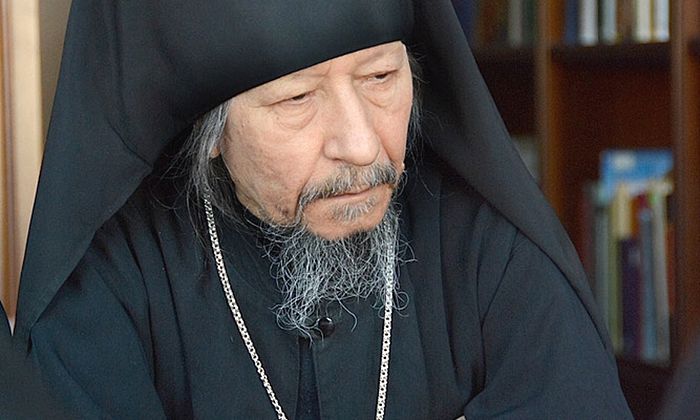
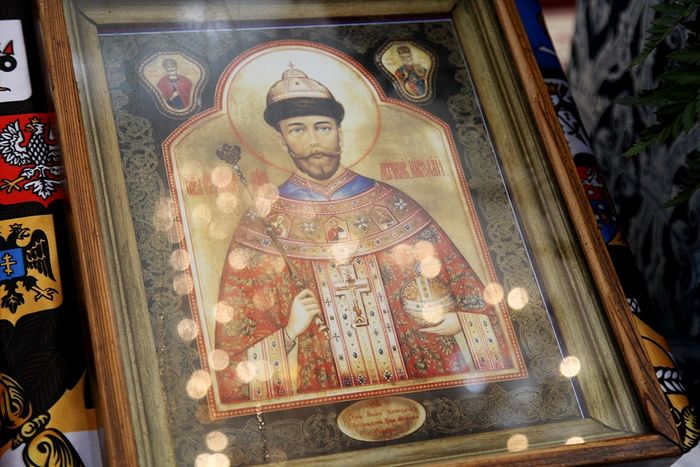
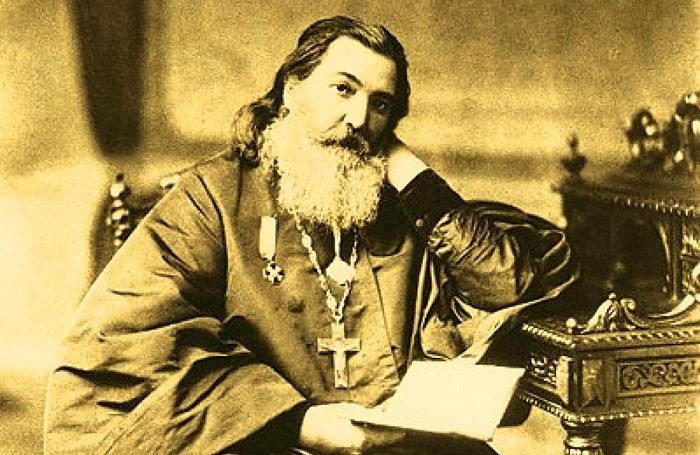
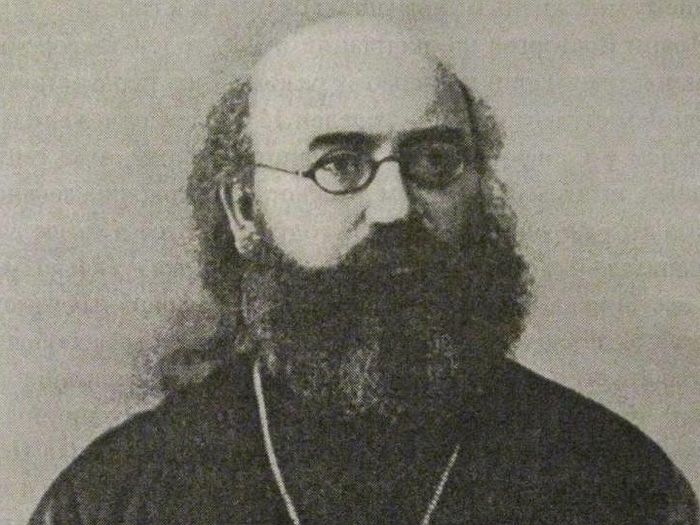
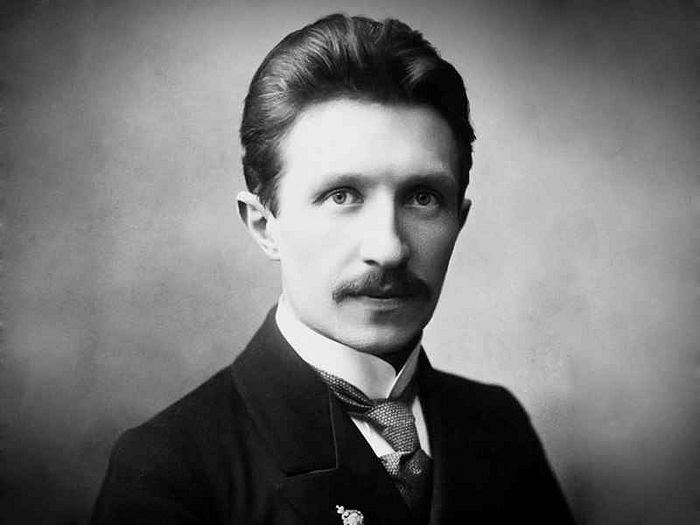
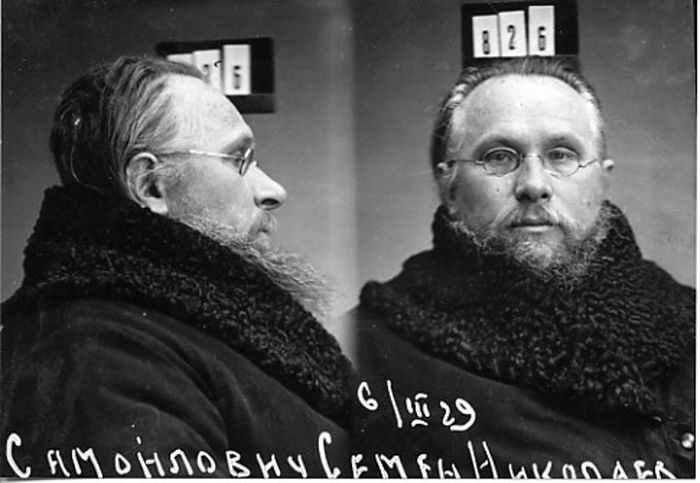
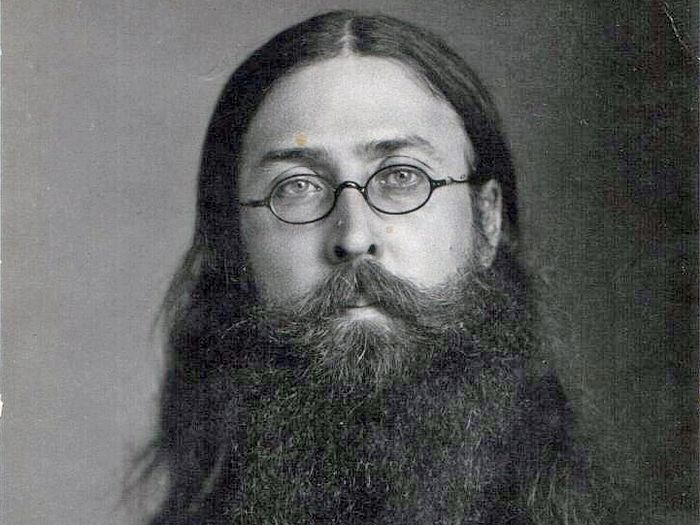
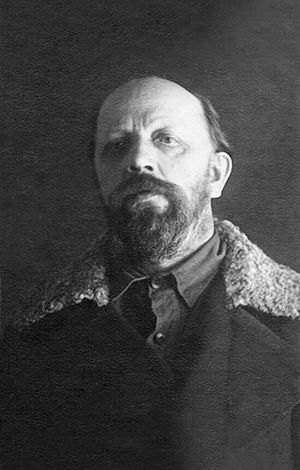
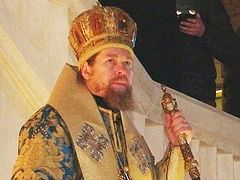
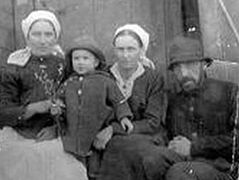
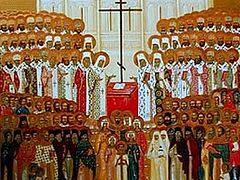
The power in Rus' lands is still exercised unlawfully.
The oath was broken.
The Tsar and the Heir were assassinated in a satanic ritual.
The land and the people still live in a lie.
They can escape it only calling anew the Tsar from them through a new Council.
.... to this end he composes an intentionally unlawful document and sends it out as a telegram to his entire army, giving his people and the troops and their commanders who swore fealty to him a last chance not to forswear their oath, and tries to prevent his people from breaking their oath, from violating the Conciliary oath of 1613.
This was the only document in the history of the Russian State which the Tsar signed with a pencil. With this same pencil he underlined in those difficult hours the following sacred lines: “Ye are risen up in your fathers’ stead, ye progeny of sinful men” (Num. 32:14); “Every imagination and thought of their hearts was continually only evil” (Gen. 6:5).
Tsar Nicholas Aleksandrovich’s last appeal to his Army on March 2, 1917 went unheard.
http://www.holy-transfiguration.org/library_en/royal_abdication.html
Staff Colonel Mordvinov writes in his memoirs about the obvious illegality of passing on the power to Michael Aleksandrovich: “They are in doubt whether the Tsar has the right to hand the Throne over to Michael Aleksandrovich, bypassing the Heir Apparent, and they are checking the fundamental laws. I already know in advance that logically it is hardly likely that they would contradict the general laws, according to which a guardian cannot renounce any of his pupil’s rights, which means that until Alexis Nikolayevich attains his majority, the Tsar cannot hand the Throne over, neither to Michael Aleksandrovich, nor to anyone else. We swore an oath of fealty to the Sovereign and to his legal Heir, and as long as Alexis Nikolayevich is alive, there is only one legal Heir.”
Pskov, March 2, 1917, 15:00.
Nicholas.”